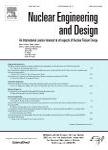版权所有:内蒙古大学图书馆 技术提供:维普资讯• 智图
内蒙古自治区呼和浩特市赛罕区大学西街235号 邮编: 010021

作者机构:Idaho Natl Lab Idaho Falls ID 83415 USA Univ Idaho Dept Mech Engn Idaho Falls ID 83402 USA Univ Idaho Nucl Engn Program Idaho Falls ID 83402 USA Univ Idaho Dept Comp Sci Idaho Falls ID 83402 USA
出 版 物:《NUCLEAR ENGINEERING AND DESIGN》 (核工程与设计)
年 卷 期:2015年第295卷
页 面:283-304页
核心收录:
学科分类:08[工学] 0827[工学-核科学与技术]
基 金:Laboratory Directed Research and Development (LDRD) program at the Idaho National Laboratory (INL) [00119, 000422461] Department of Energy under DOE [DE-AC07-05ID14517]
主 题:BRANCH & bound algorithms UNCERTAINTY (Information theory) BOILING water reactor design & construction ELECTRIC power failures RISK assessment
摘 要:Evaluation of the impacts of uncertainty and sensitivity in modeling presents a significant set of challenges in particular to high fidelity modeling. Computational costs and validation of models creates a need for cost effective decision making with regards to experiment design. Experiments designed to validate computation models can be used to reduce uncertainty in the physical model. In some cases, large uncertainty in a particular aspect of the model may or may not have a large impact on the final results. For example, modeling of a relief valve may result in large uncertainty, however, the actual effects on final peak clad temperature in a reactor transient may be small and the large uncertainty with respect to valve modeling may be considered acceptable. Additionally, the ability to determine the adequacy of a model and the validation supporting it should be considered within a risk informed framework. Low fidelity modeling with large uncertainty may be considered adequate if the uncertainty is considered acceptable with respect to risk. In other words, models that are used to evaluate the probability of failure should be evaluated more rigorously with the intent of increasing safety margin. Probabilistic risk assessment (PRA) techniques have traditionally been used to identify accident conditions and transients. Traditional classical event tree methods utilize analysts knowledge and experience to identify the important timing of events in coordination with thermal-hydraulic modeling. These methods lack the capability to evaluate complex dynamic systems. In these systems, time and energy scales associated with transient events may vary as a function of transition times and energies to arrive at a different physical state. Dynamic PRA (DPRA) methods provide a more rigorous analysis of complex dynamic systems. Unfortunately DPRA methods introduce issues associated with combinatorial explosion of states. This paper presents a methodology to address combinatorial